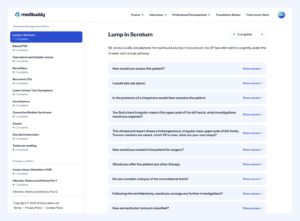
Distance learning has become an integral part of modern education. Whether you’re a student, a teacher, or a lifelong learner, the right tools can make all the difference in your online education experience. Let’s dive into the seven essential tools that can help you succeed in the world of distance learning.
Internet Speed Matters
In the realm of distance learning, a reliable internet connection is non-negotiable. Slow speeds can lead to interrupted video calls, delayed responses, and overall frustration. A fast and stable connection ensures smooth access to lectures, resources, and communication with peers and instructors. Here are some tips to optimize your connection:
- Consider using an Ethernet cable for a wired connection, which is typically more stable than Wi-Fi.
- Position your router in a central location, minimize the number of devices connected, and use range extenders if needed.
- Regularly check your internet speed and contact your provider if you experience persistent issues.
Learning Management System (LMS)
A Learning Management System (LMS) is a software application that facilitates the administration, documentation, tracking, reporting, and delivery of educational courses. It serves as the backbone of online education, providing a centralized platform for accessing course materials, submitting assignments, and communicating with instructors and classmates. Some of the most popular LMS platforms include Moodle, Blackboard, Canvas, and Google Classroom. Each platform offers unique features, so it’s essential to choose one that aligns with your specific needs and preferences.
Video Conferencing Software
When selecting video conferencing software, look for features such as high-definition video, screen sharing, breakout rooms, recording capabilities, and chat functions. These features enhance the learning experience by facilitating interaction and engagement. Top video conferencing tools include Zoom, Microsoft Teams, Google Meet, and Cisco Webex. Each of these tools offers a range of functionalities designed to support effective online learning and collaboration.
Collaboration Tools
Collaboration is a crucial component of the learning process. It fosters creativity, critical thinking, and problem-solving skills. In a distance learning environment, collaboration tools help bridge the gap between students and instructors, enabling them to work together seamlessly. Some of the best collaboration tools for distance learning include Slack, Trello, Asana, and Microsoft Teams. These tools provide platforms for group discussions, project management, and real-time collaboration.
Note-Taking Apps
Digital note-taking offers several advantages over traditional pen-and-paper methods. It allows for easy organization, searchability, and the ability to integrate multimedia elements like images and links. Digital notes can also be synced across devices, ensuring you have access to them wherever you go.
Here are some Top note-taking apps:
- Evernote
- OneNote
- Notion
- Google Keep
Each of these apps offers unique features that cater to different learning styles and preferences.
E-Books and Online Libraries
Having access to a vast array of e-books and online libraries is essential for distance learning. These resources provide learners with the information they need without the constraints of physical libraries. Popular platforms for accessing e-books and online libraries include Amazon Kindle, Google Books, Project Gutenberg, and JSTOR. These platforms offer a wide range of academic and recreational reading materials.
Online Assessment Tools
Online assessments come in various forms, including quizzes, assignments, exams, and peer reviews. These assessments are crucial for measuring progress and understanding in a distance learning environment. Leading online assessment tools include Google Forms, Kahoot!, Quizlet, and Socrative. These tools offer diverse ways to create and administer assessments, making it easier to evaluate learning outcomes. Some platforms also incorporate interactive quizzes to enhance student engagement.
Time Management Apps
Effective time management is vital for success in distance learning. Time management apps help students stay organized, set goals, and track their progress.
Here are some Top time management tools:
- Todoist
- Trello
- Forest
- RescueTime
These apps assist learners in prioritizing tasks, maintaining focus, and balancing their study schedules.
Conclusion
As technology continues to evolve, these advancements will continue to shape the future of distance learning, making education more accessible, personalized, and interactive than ever before.
Distance learning has been made possible and successful due to the advent of various tools and technologies. Learning Management Systems, video conferencing tools, online collaboration platforms, multimedia content, virtual reality, and online libraries are just a few examples of the foremost tools for distance learning. These tools have transformed the educational landscape, making learning more accessible, interactive, and engaging. As technology continues to advance, the future of distance learning looks even more promising, offering endless possibilities for learners worldwide.

